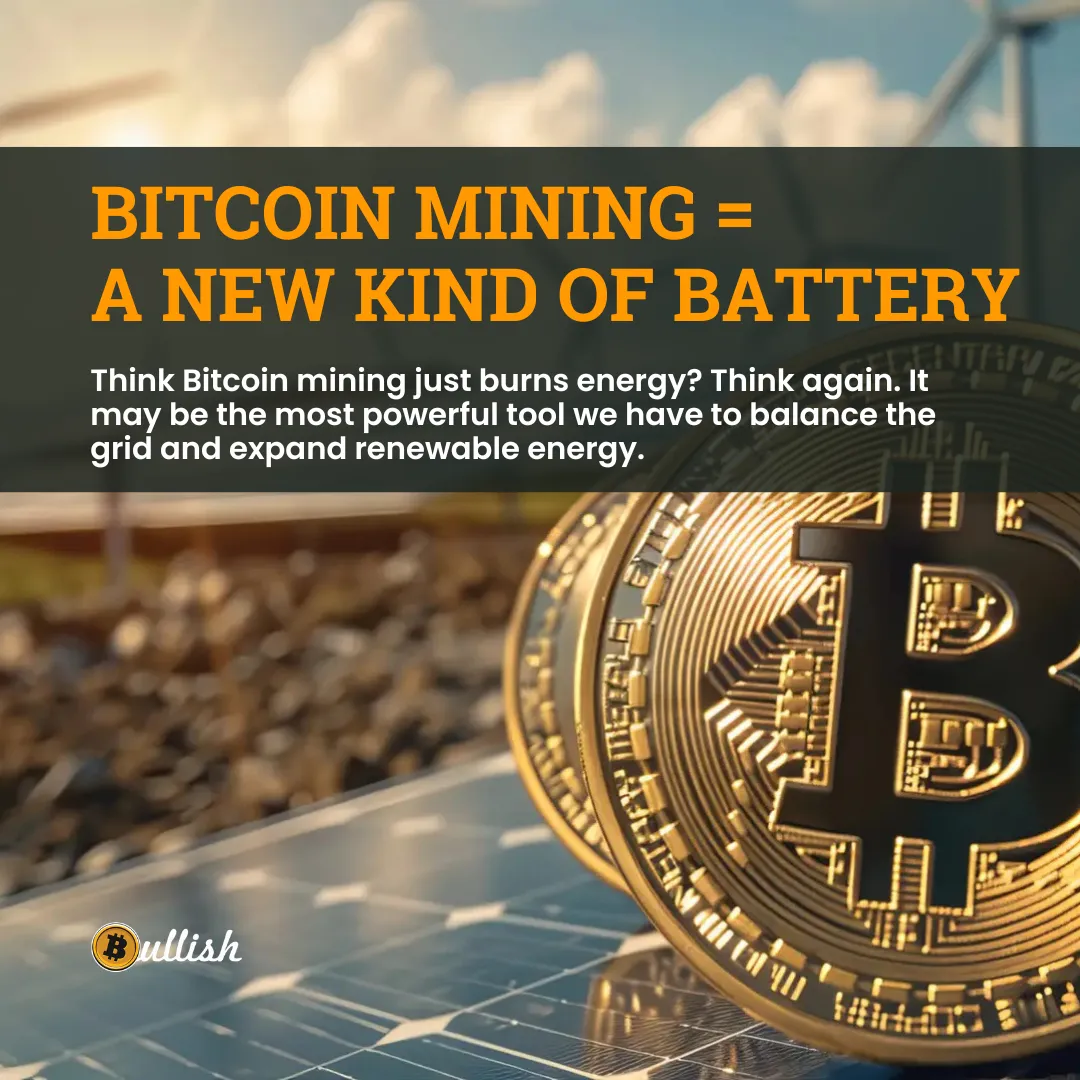
Bitcoin Mining as a Battery: Converting Electricity Into Financial Energy
In today’s world of energy innovation, one misunderstood technology stands out for its ability to stabilize power grids and unlock stranded renewable energy: Bitcoin mining. While critics often focus on its power consumption, they miss a key insight—Bitcoin mining can act as a virtual battery, one that transforms surplus electricity into financial energy.
Real-Time Power, Real-Time Problems
Electricity is not stored on the grid—it is generated and consumed in real time, within milliseconds. That means every lightbulb, AC unit, and electric car must be powered by energy produced that very moment. If generation outpaces demand, it can overload and damage the grid. If demand outpaces generation, blackouts follow. Utilities walk a tightrope every second to balance supply and demand.
To do this, they rely on throttling power plants, deploying batteries, or activating costly “peaker” plants. But these strategies have limits. Enter Bitcoin mining.

Bitcoin Mining: A One-Way Battery
Unlike a chemical battery that stores energy to be used later, Bitcoin mining uses energy now to perform computational work, securing the Bitcoin network and generating Bitcoin. That Bitcoin can be stored, sent, or sold globally—effectively transforming electricity into money.
This is financial energy. It doesn't require transmission lines or substations. It travels instantly over the internet, bypassing the physical limitations of traditional infrastructure.

The Renewable Energy Solution
Here’s the real kicker: Bitcoin mining solves one of the biggest problems in renewable energy—intermittency and curtailment.
You can’t just plug a gigawatt-scale solar field into the grid without having steady customers to absorb that power. Without buyers, utilities must curtail renewable output, wasting clean energy. But with Bitcoin mining on standby, that energy can be used immediately and profitably.
Bitcoin miners can throttle operations in seconds, ramping up when there’s excess power and shutting down when demand spikes elsewhere. This kind of flexibility is a game-changer for renewable energy growth.

Engineering Perspective
As the founder of BullishBTC and a mechanical engineer specializing in Industrial Grade Solar Microgrids, I see this first-hand. Our solar systems are designed to operate efficiently in remote and unpredictable environments. Pairing them with mining infrastructure offers a way to monetize excess energy, improve grid stability, and accelerate solar, wind, hydro, and even geothermal deployment.
Take the example of a geothermal vent in Greenland. It produces megawatts of clean energy daily, but local demand is too low and there’s no transmission infrastructure to export that power. Without Bitcoin mining, that energy is wasted. With it, that power becomes Bitcoin—usable by anyone, anywhere, instantly.

Financial Energy on Digital Rails
This is the breakthrough: electricity must travel through wires; Bitcoin travels through the internet.
By shifting surplus electrical energy into digital currency, Bitcoin mining creates a global marketplace for electrons. It allows remote or isolated energy projects to monetize output without waiting for cities or factories to show up.
Final Thoughts
Bitcoin isn’t competing with the grid—it’s supporting it.
It balances supply and demand, monetizes stranded energy, and enables renewable growth. It doesn’t store energy in chemical form—it stores value, in a decentralized, borderless currency. It’s the battery we didn’t know we needed—one that turns power into prosperity and transmits it around the world at the speed of light.

📡 Follow more insights like this at BullishBTC.com
📷 Share this post with your network and help reframe the narrative around Bitcoin and energy.



